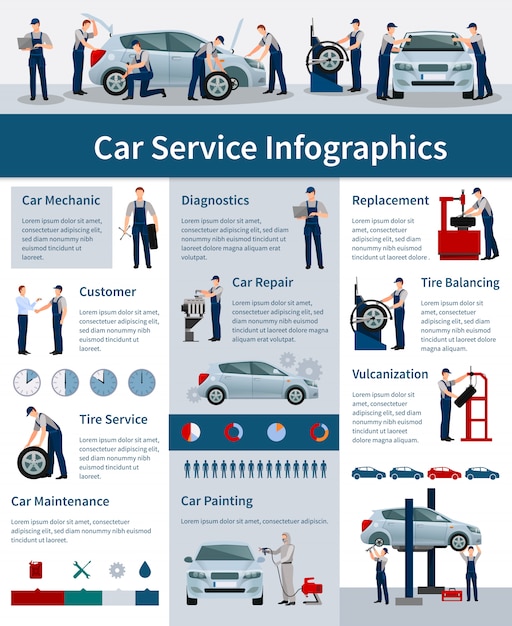A Basic Guide To Comprehending The Caution Lighting On Your Vehicle
A Basic Guide To Comprehending The Caution Lighting On Your Vehicle
Blog Article
Write-Up Composed By-Finley Park
When you're behind the wheel, those little warning lights on your car's dashboard can be quite difficult. What do they mean, and should you be concerned? Recognizing these signals is critical for your car's wellness, however it does not need to be a daunting task. By deciphering the mystery behind each light, you'll be furnished to take care of potential concerns successfully and maintain your car running smoothly. So, following time a warning light flashes, don't panic - arm yourself with knowledge and take control of the circumstance.
Relevance of Vehicle Warning Lights
Understanding the significance of your auto's caution lights is critical for keeping your vehicle's health and wellness. These lights work as your auto's interaction system, signaling you to potential problems that can endanger your safety on the road or result in costly repair work if neglected. By paying attention to these warnings, you can deal with issues early and protect against more damages to your car.
Ignoring cautioning lights can cause major consequences, such as engine failing, brake breakdowns, and even mishaps. These lights are made to alert you of concerns ranging from low tire pressure to engine breakdowns, giving you the opportunity to do something about it before the circumstance gets worse. On a regular basis checking and understanding these warnings can save you time, money, and ensure your safety and security while driving.
In http://www.tractionnews.com/effective-ways-to-get-more-business-for-your-car-repair-shop/ to maintaining you risk-free, responding immediately to cautioning lights can likewise aid lengthen the lifespan of your auto. By resolving concerns beforehand, you can stop little issues from rising into significant repair work, ultimately saving you time and money over time. Bear in mind, your auto's caution lights are there for a factor - don't neglect them!
Common Caution Lighting and Meanings
When it involves driving your vehicle, understanding common caution lights and their meanings is essential for your safety and security and car maintenance. Right here are a couple of usual caution lights you may experience:
1. ** Examine Engine Light **: This light indicates a problem with your engine. It could be something small like a loose gas cap or something extra major like engine misfiring.
2. ** Battery Light **: This light signals a problem with your car's billing system. https://arthurjeytm.bloggerbags.com/35043434/struggling-to-locate-the-best-vehicle-service-center-take-a-look-at-essential-standards-for-evaluating-regional-technicians-to-ensure-your-automobile-is-well-dealt-with can indicate a malfunctioning battery, alternator, or various other associated parts.
3. ** Oil Stress Light **: When this light comes on, it suggests your engine might be running low on oil or experiencing low oil stress, which can bring about engine damages if not dealt with promptly.
4. ** Brake System Light **: This light indicates an issue with your stopping system. It could imply reduced brake fluid degrees or an issue with the brake system that requires instant interest.
Recognizing these common caution lights will assist you recognize possible concerns at an early stage and prevent even more significant problems down the road.
Exactly how to React To Warning Lighting
In the event that a warning light illuminates on your car's dashboard, it's vital to react quickly and suitably. When a warning light begins, the primary step is to consult your owner's manual to comprehend the certain concern indicated by the light.
https://brakeservicenearme28394.blog-kids.com/30056443/not-sure-regarding-picking-the-excellent-automobile-service-center-discover-essential-recommendations-for-analyzing-regional-mechanics-to-see-to-it-your-car-remains-in-trustworthy-hands call for immediate focus, while others might show a much less immediate issue. If the warning light is red or flashing, it's commonly a sign of a severe trouble that requires prompt action. In such instances, it's recommended to pull over safely, shut off the engine, and seek expert aid.
For yellow or orange caution lights, while they may not require prompt interest, it's still important to resolve the underlying issue without delay to avoid further damages. Routine upkeep and evaluation can assist stop cautioning lights from coming on suddenly.
Conclusion
To conclude, understanding your auto's warning lights is crucial for preserving your vehicle's health and safety. By on a regular basis inspecting and reacting to these cautions, you can deal with possible concerns early and stop pricey fixings or safety threats. Keep in mind to consult your owner's guidebook for info on various warning lights and constantly take immediate action for red or blinking lights. Remain positive and maintain your auto running efficiently!
